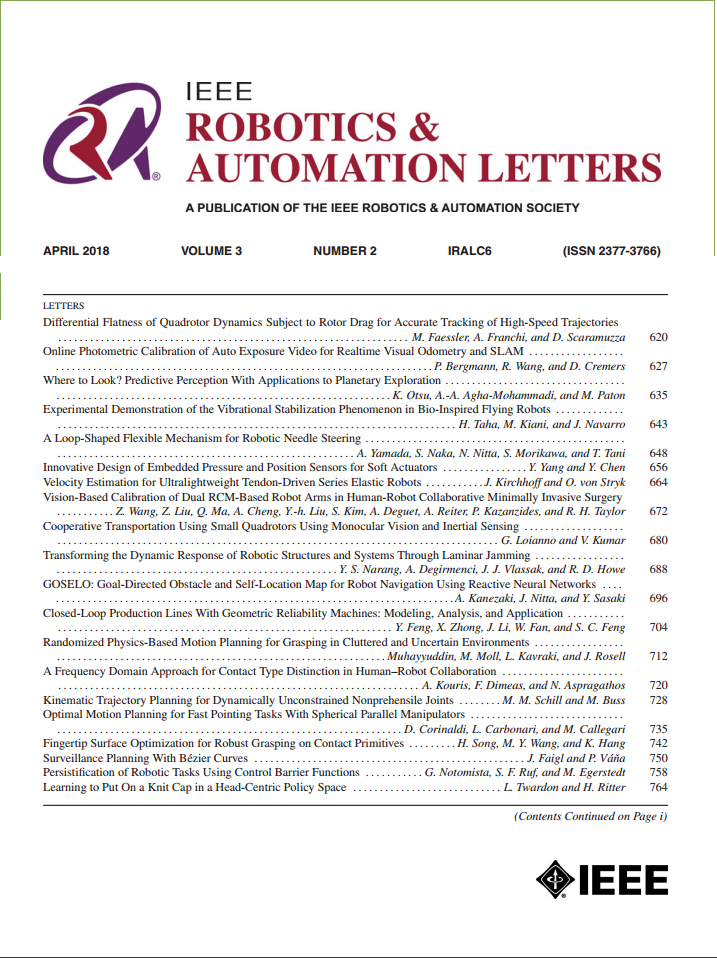自主无人机导航的跨模态视觉运动策略学习
IF 4.6
2区 计算机科学
Q2 ROBOTICS
引用次数: 0
摘要
开发适应各种场景的有效的基于视觉的导航算法是自主无人机系统面临的重大挑战,在各种实际应用中具有巨大的潜力。本文提出了一种新的视觉运动策略学习框架,将交叉模态对比学习与深度强化学习(DRL)相结合来训练视觉运动策略。我们的方法首先利用对比学习从高维RGB图像中提取一致的、以任务为中心的视觉表示作为深度图像,然后使用DRL直接将这些表示映射到动作命令。该框架使RGB图像能够捕获与深度图像相似的结构和空间信息,这些信息在光照和纹理变化下基本保持不变,从而在各种环境中保持鲁棒性。我们通过模拟和物理实验评估了我们的方法,表明我们的视觉运动策略在有效性和对看不见的视觉干扰的弹性方面优于基线方法。我们的研究结果表明,增强基于rgb的单眼导航可转移性的关键在于实现跨场景的一致、对齐良好的视觉表示,这是传统端到端方法经常缺乏的一个方面。本文章由计算机程序翻译,如有差异,请以英文原文为准。
Learning Cross-Modal Visuomotor Policies for Autonomous Drone Navigation
Developing effective vision-based navigation algorithms adapting to various scenarios is a significant challenge for autonomous drone systems, with vast potential in diverse real-world applications. This paper proposes a novel visuomotor policy learning framework for monocular autonomous navigation, combining cross-modal contrastive learning with deep reinforcement learning (DRL) to train a visuomotor policy. Our approach first leverages contrastive learning to extract consistent, task-focused visual representations from high-dimensional RGB images as depth images, and then directly maps these representations to action commands with DRL. This framework enables RGB images to capture structural and spatial information similar to depth images, which remains largely invariant under changes in lighting and texture, thereby maintaining robustness across various environments. We evaluate our approach through simulated and physical experiments, showing that our visuomotor policy outperforms baseline methods in both effectiveness and resilience to unseen visual disturbances. Our findings suggest that the key to enhancing transferability in monocular RGB-based navigation lies in achieving consistent, well-aligned visual representations across scenarios, which is an aspect often lacking in traditional end-to-end approaches.
求助全文
通过发布文献求助,成功后即可免费获取论文全文。
去求助
来源期刊

IEEE Robotics and Automation Letters
Computer Science-Computer Science Applications
CiteScore
9.60
自引率
15.40%
发文量
1428
期刊介绍:
The scope of this journal is to publish peer-reviewed articles that provide a timely and concise account of innovative research ideas and application results, reporting significant theoretical findings and application case studies in areas of robotics and automation.
 求助内容:
求助内容: 应助结果提醒方式:
应助结果提醒方式:


